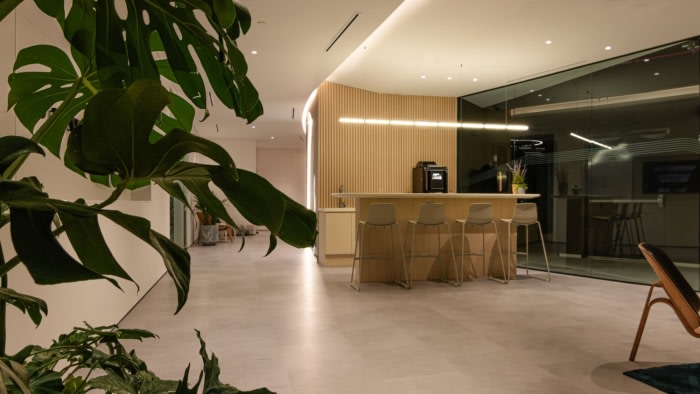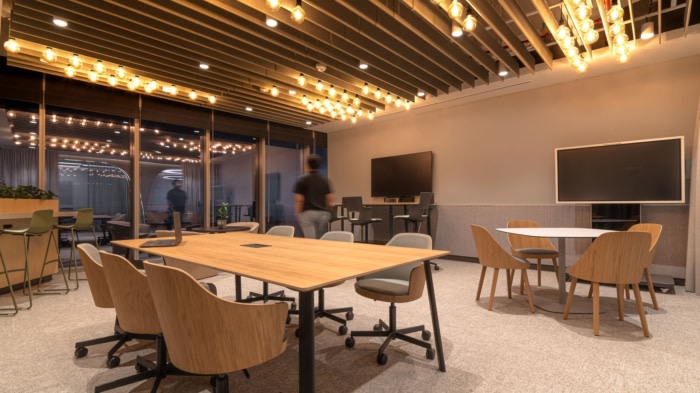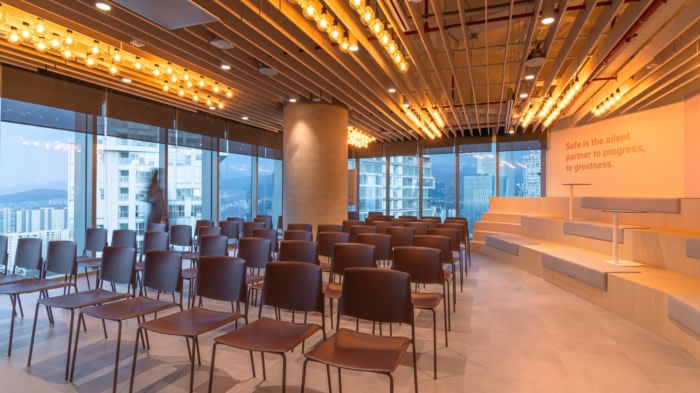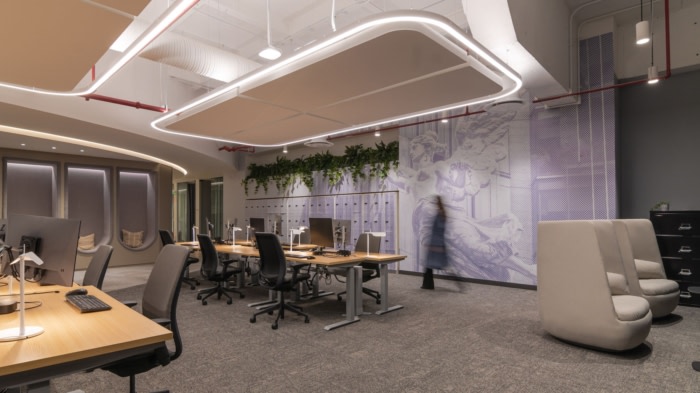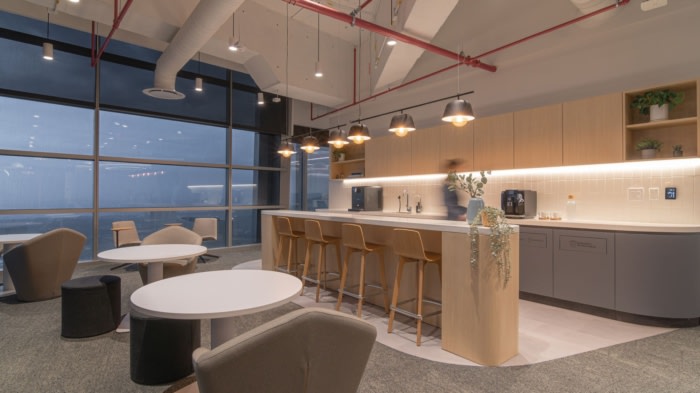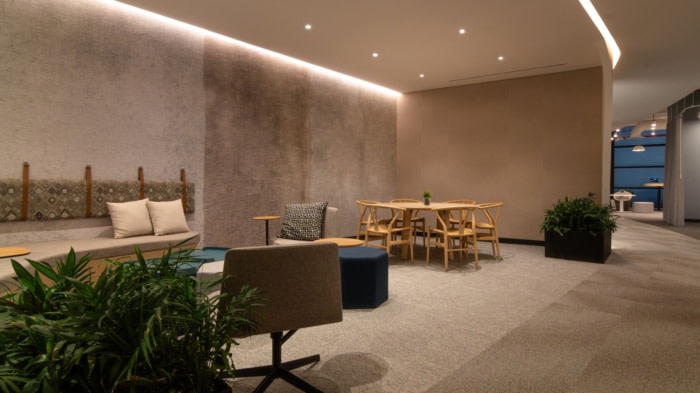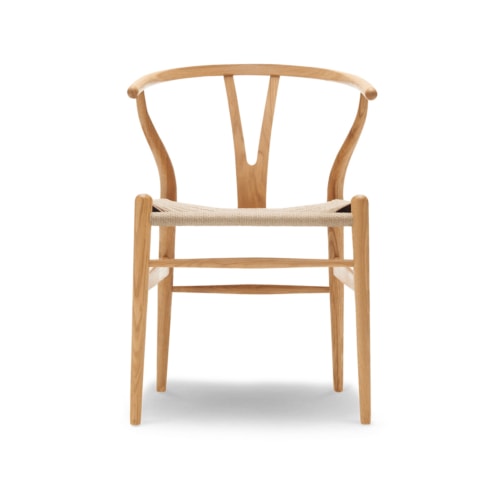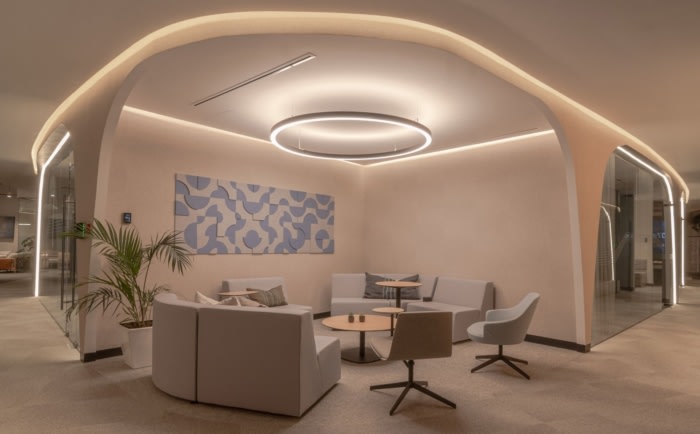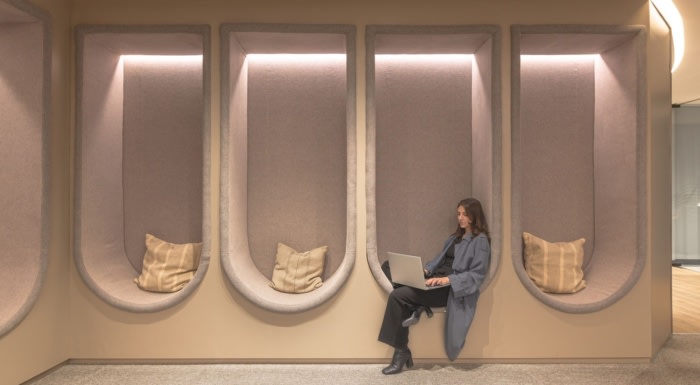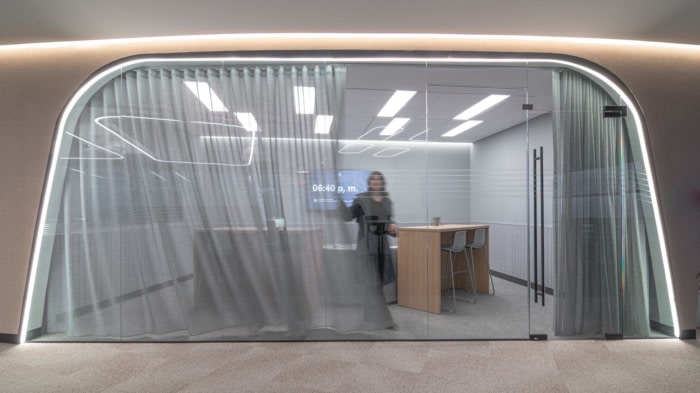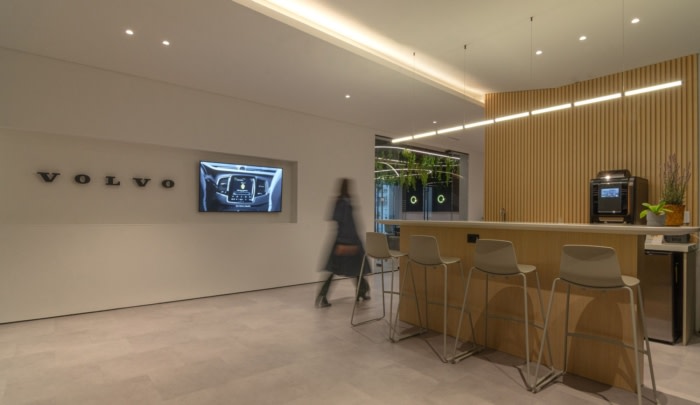
Volvo Offices – Mexico City
Volvo City project designed by Space in Mexico City showcases Scandinavian minimalism blended with Mexican craftsmanship, featuring a circuit-like layout with natural lighting, hybrid workspaces, and a sustainability focus.
Volvo Cars, founded in 1927, is today one of the most well-known and respected automobile brands in the world, with sales of 661,713 cars in 100 countries in 2020 alone. Volvo Cars has been part of Zhejiang Geely Holding since 2010. By the end of 2020, it had approximately 40,000 full-time employees. Volvo’s product development, marketing, and administration offices are primarily located in Gothenburg, Sweden. The main offices in the Asia-Pacific region are in Shanghai. The primary production plants are in Gothenburg (Sweden), Ghent (Belgium), South Carolina (USA), Chengdu, and Daqing (China). Engines are manufactured in Skövde (Sweden) and Zhangjiakou (China), while body components are produced in Olofström (Sweden).
In line with the company’s new purpose, Volvo Cars aims to provide its customers with the freedom to move sustainably, individually, and safely. This purpose is reflected in a series of corporate ambitions, for example, by the middle of this decade, Volvo Cars aims for 50% of its global sales to be fully electric cars and aims to establish 5 million direct consumer relationships. Volvo Cars is also committed to further reducing its carbon footprint with the ambition to become a climate-neutral company by 2040.
The design of Volvo’s offices, called Volvo City, was created on half of the 28th floor at The Summit Santa Fe. The design incorporates the minimalism and functionality of Sweden, as well as the clean and smooth lines of the brand’s vehicles. The look and feel provides a sense of hospitality by blending Scandinavian style with Mexican craftsmanship. The perimeter features curtain wall facades, which provide ample natural light and excellent panoramic views.
Volvo City is designed in a circuit-like layout, with the main circulation path forming a road that connects different spaces. Lighting plays a significant role and serves as a guiding element throughout the office. The hybrid office model is implemented through casual, collaborative, and traditional workspaces, as well as recreational and relaxation areas, divided into zones such as the public, collaborative workspace, and high-concentration work areas. The varied workspace palette allows users to inhabit the office throughout the day.
Upon entering, you are greeted by the lobby bar and lounge, which serves as a waiting or casual meeting area and divides the public area from the private area. To the right is the public area, which includes a 6-person boardroom, a cafeteria, a conference center for 66 people, and technical rooms. On the left side of the lobby, past an access control point, is the open workspace area. This area promotes teamwork through flexible furniture.
The heart of this zone is the work cafe located in a corner with a panoramic view, promoting socialization and dynamic work. In the center of the area, next to the core of the building, you will find various enclosed spaces that function as meeting rooms and war rooms. These elements are framed by a luminous arch that emulates the window of a car.
Finally, there is the concentration area, which promotes individual work. This zone is quiet and calm, and it includes a pair of phone booths for video calls or personal calls. Within the concentration area, there is a set of enclosed spaces that houses the print room, 4 unassigned private rooms called libraries, a flexible area, a relaxation room, and a maternity room.
The project’s journey ends with a secondary entrance and backlit art that indicates that it is not the end of the road because there is still more to discover. In addition to providing its users with a top-notch workspace, the Volvo City project aims to be environmentally friendly. With sustainability in mind, the project was designed with LEED certification in the works.
Design: Space
Design Team: Juan Carlos Baumgartner, Sophia Peimbert, Gerardo Campa, Angélica Medina
Builder: Alpha Hardin
Photography: Luis Lemus
